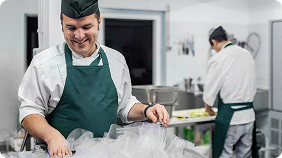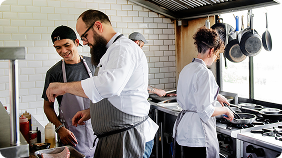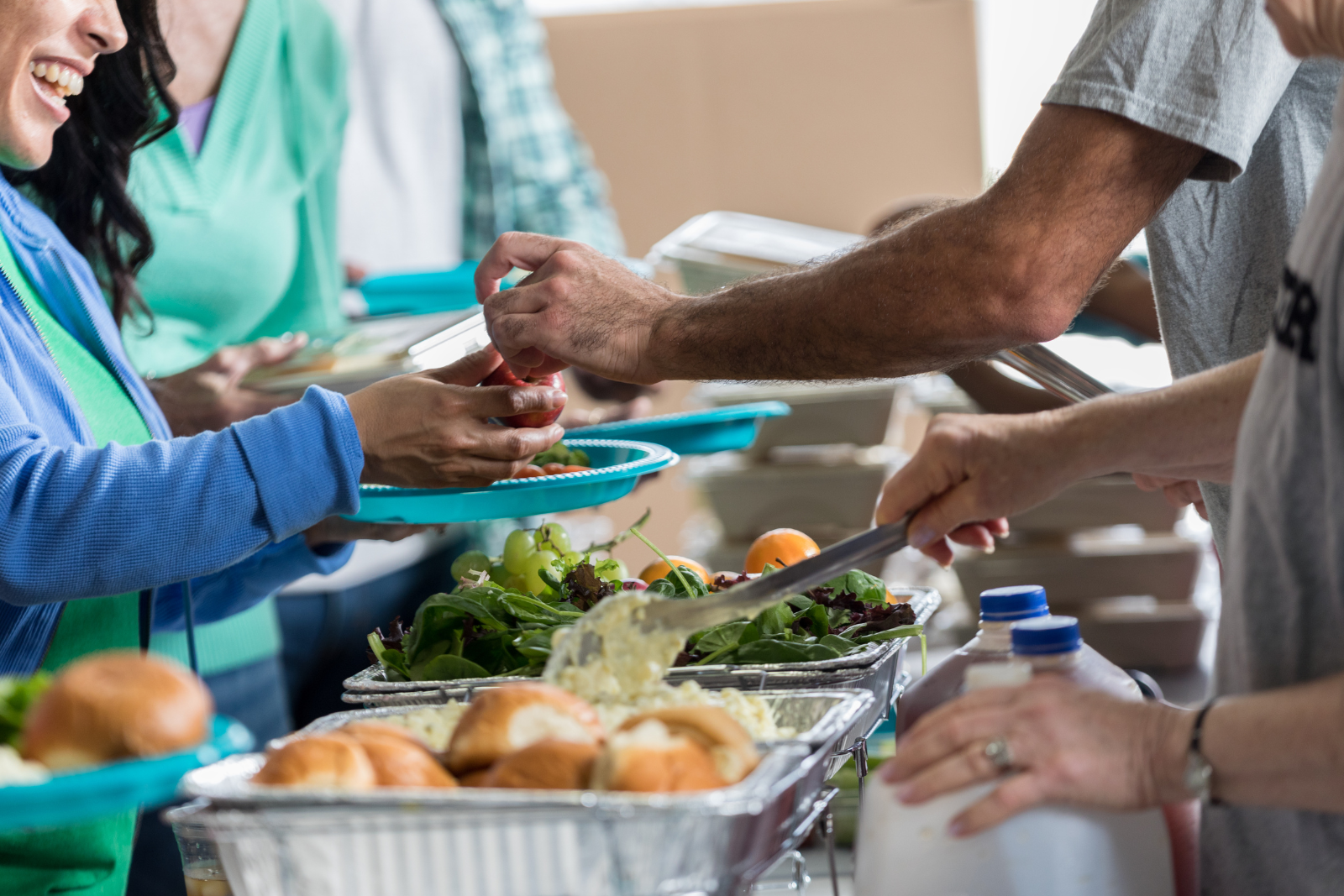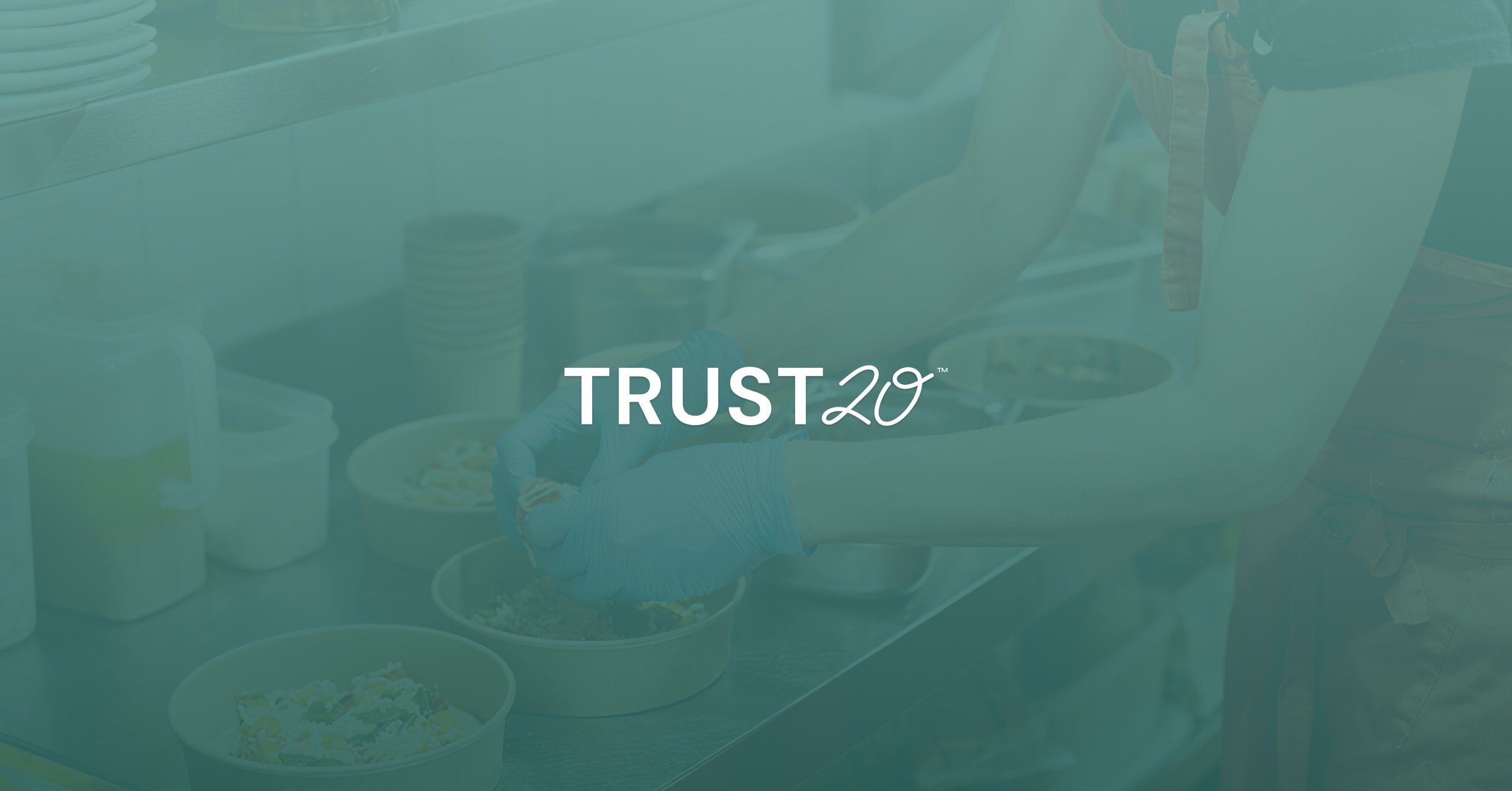Sustainability is no longer just a buzzword, but an expectation.
Customers today, whether they’re eating at home, in restaurants, or even in hospital cafeterias, expect more than delicious food. They care about where it comes from, how it’s sourced, and the impact it has on the planet. More than 78% of consumers in the United States say a sustainable lifestyle is important to them, and our diets are often the first place we look to make sustainable swaps.1
Whether you’re running a full-service restaurant, a food truck, or a catering business, building a sustainable menu could be your most effective strategy for engaging these eco-conscious customers while also aligning with responsible food safety practices.
But sustainability doesn't stop at choosing organic tomatoes or buying locally. It has layers, from ethical sourcing and reducing waste to providing label transparency that helps your customers make informed decisions.
Here’s why sustainability matters for your menu, how it can drive customer loyalty, and what practical steps you can take to make it happen for your foodservice business.
In this blog, we’ll go over:
What does a “sustainable menu” even mean?
What’s the ROI of sustainability?
What does a “sustainable menu” even mean?
Before we dig in, let’s clarify what a “sustainable menu” looks like. At its core, it focuses on three key things:
-
Sourcing food in a way that supports the environment, farmers, and producers.
-
Reducing food waste and improving operational efficiency.
-
Providing transparency in labeling, including sourcing information, allergen warnings, and nutritional details.
A key point to remember is that sustainability efforts will not look the same across different establishments and businesses in the food industry. A food truck won’t approach sustainability the same way a corporate cafeteria will.
The goal, then, isn’t perfection. The goal is to maintain consistent effort toward improvement, in whatever ways are most meaningful to you and your business.
Ethical sourcing is your starting point
At the heart of sustainability is ethical sourcing. Look at it this way, when you plan your menu, your customers aren’t just eating food but are also participating in a story.
Where do your ingredients come from? How were they grown or raised? Questions like these are becoming part of the dining conversation as more people want to support businesses that value ethical practices.
According to a study by PwC, consumers are willing to spend an average of 9.7% more on transparent, sustainable goods and services.2 That’s a stat you can’t afford to ignore.
Sourcing from local farms, choosing fair trade-certified products, and using sustainably caught seafood are all steps that can make your menu more ethical and appealing.
For instance, instead of simply offering “shrimp tacos,” promote them as featuring wild-caught shrimp from sustainable fisheries.
Better yet, let the customer get to know the supplier. You don’t need to spend a lot of money or time doing this, either. Something as simple as a scannable QR code on your menu leading to a farm’s website that customers can follow while they wait for their orders works wonders.
Not only do steps like this tell a compelling story, but the effort also signals to customers that you’ve done the homework to ensure ethical sourcing. This simple shift can turn a standard menu into one that stands out in an oversaturated market.
Reduce waste, gain loyalty
According to the U.S. Department of Agriculture, waste is one of the biggest challenges in the foodservice industry, with an estimated 30-40% of the food supply wasted yearly.3 Addressing this issue can not only make your business more sustainable but also cut costs and attract customers who respect your efforts.
Start by analyzing your operations. Are you offering portion sizes that customers can rarely finish, leading to food waste? Could custom portion options or “half-portion” pricing help you manage this issue while giving customers more choice? Many businesses are finding clever ways to tackle waste without sacrificing the customer experience.
Take Sweetgreen, for example, a fast-casual chain with dozens of locations around the US. In addition to providing certified compostable items–such as forks, lids, bags, and bowls–to its customers, the company operates a circular system in which all its New York City restaurants send their compostable materials and food waste to McEnroe Organic Farms for composting.4
Similarly, restaurants like Silo in the United Kingdom take zero-waste to the next level, composting all food scraps and designing dishes based on sustainable ingredients that often arrive with no packaging.5
Again, it doesn’t need to be overly complex. For your menu, this could mean cooking with “imperfect” produce that would otherwise go to waste (hello, stews!) or rethinking how you package delivery items to reduce single-use plastics. These small changes can make a big statement to your customers.
Menu transparency encourages trust
Want to know the quickest way to connect with eco-conscious customers? Be transparent. Today’s customers expect clear labeling that tells them not only what they’re eating but the story behind it. Transparency builds trust, and in turn, trust builds long-term loyalty.
A shift towards transparency might involve labeling the source of your beef patties (such as grass-fed, locally raised cattle) or identifying plant-based dishes as “climate-friendly.”
You can also list allergens clearly and make the nutritional content of items easily accessible, either directly on the menu or via QR codes.
Shake Shack provides an excellent example. They openly share the ingredients and origins of their food, and customers love them for it.6 If your menu reflects the same level of transparency, you’ll gain a loyal following among customers who want to feel confident about what they’re eating.
Transparency doesn’t stop at the menu itself. Incorporating QR codes that link to detailed sourcing information on your food truck signage or behind-the-scenes videos of your kitchen operations on social media can add an extra layer of authenticity. It’s about giving customers visibility into the sustainability initiatives that make your business unique.
Safety first, always
Building a sustainable menu isn’t just about the “green” side of things. It’s about doing it the right way. No matter how ethically sourced or well-labeled your food is, food safety must always take center stage.
For instance, it’s great to have locally sourced greens, but if they’re not washed thoroughly or stored at proper temperatures, you risk foodborne illnesses. Similarly, bulk buying may seem eco-friendly, but you must ensure that your storage methods keep the ingredients fresh and safe.
Fortunately, sustainability and safety don’t have to clash. The two concepts can complement each other beautifully.
Proper labeling for allergens is a great example of transparency doubling as a safety measure. Not only does it ensure customers with dietary restrictions feel seen and accommodated, but it also demonstrates a commitment to both their well-being and your professional standards.
Similarly, partnerships with ethical suppliers who adhere to strict food safety regulations can further solidify your reputation as a responsible food service provider.
Integrating safety into your sustainability practices also protects your operations. For instance, monitoring the cold chain process for perishable items isn’t just necessary for safety, but can also allow you to maintain quality and reduce waste by preventing spoilage.
Inclusive sustainability for all food businesses
You might be thinking, “Sure, these ideas sound great for restaurants, but what about my catering business or food truck?”
Here’s the good news: sustainability isn’t limited by your format.
Catering companies can adjust their operations by offering refillable buffet stations instead of creating individually wrapped portions. This practice minimizes the use of single-use plastics and enhances the dining experience by offering customizable options for each individual person.
Food trucks, on the other hand, can emphasize sustainability by sourcing local ingredients and using compostable serveware. Think farm-to-truck rather than farm-to-table. Even serving cold drinks in reusable or recyclable cups can make a positive impact while resonating with eco-conscious consumers.
What’s the ROI of sustainability?
Is building a sustainable menu really worth it? The short answer is yes, and here’s why.
A Nielsen report showed that 73% of global consumers say they’d definitely change their consumption habits to reduce their environmental impact.7 While this doesn’t automatically translate to increased revenue, it does give your business a significant competitive edge.
It’s also worth noting that sustainable practices can provide measurable savings over time. Reducing food waste means lower ingredient costs. Composting can save on trash removal fees, and eco-friendly packaging often leads to bulk savings as societal demand pushes suppliers to lower their costs.
Most importantly, a sustainable, transparent brand is one that fosters goodwill and customer loyalty. Eco-conscious consumers are far more likely to choose your business over a competitor that doesn’t prioritize sustainability, and they’re more likely to recommend you to friends and family.
Wrapping it up (but not in plastic, of course)
Sustainability is no longer a trend, but a movement shaping the future of foodservice.
From ethical sourcing and waste reduction to clear menu transparency, the steps you take now will determine how your business thrives tomorrow.
Adding sustainability attracts eco-conscious customers while also building a stronger, more efficient, and trusted brand. No matter the size or type of food business you run, there’s always room to make small, impactful changes.
The key is to start now.
Want to take your sustainability efforts to the next level but not sure where to begin? Explore Trust20’s products and resources to get a better idea of how to make your operations safer and more cohesive. Together, we can change how foodservice operates—for the better.
Sustainability isn’t an option anymore. It’s the future, so why not lead the way?
Sources
1. McKinsey: Do consumers care about sustainability & ESG claims?
2. PwC: Consumers willing to pay 9.7% sustainability premium, even as cost-of-living and inflationary concerns weigh: PwC 2024 Voice of the Consumer Survey
3. USDA: Food Waste FAQs
4. Sweetgreen: Sweetgreen in Schools
5. Silo: Zero Waste Philosophy
6. Shake Shack: Discover Shake Shack Values: Standing for Something Good
7. Nielsen: The Database: What Sustainability Means Today






.png)

.png)
